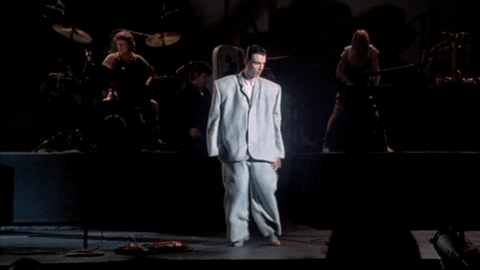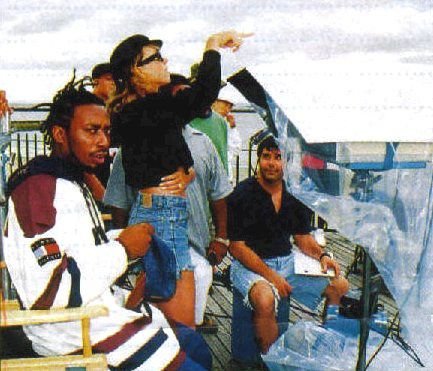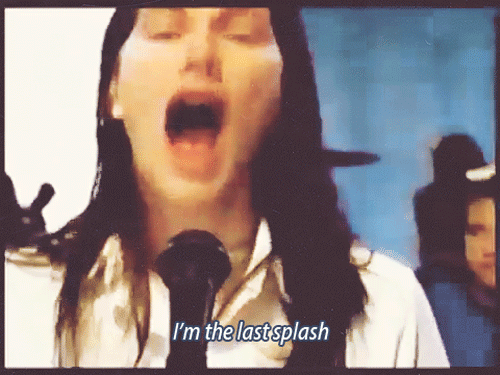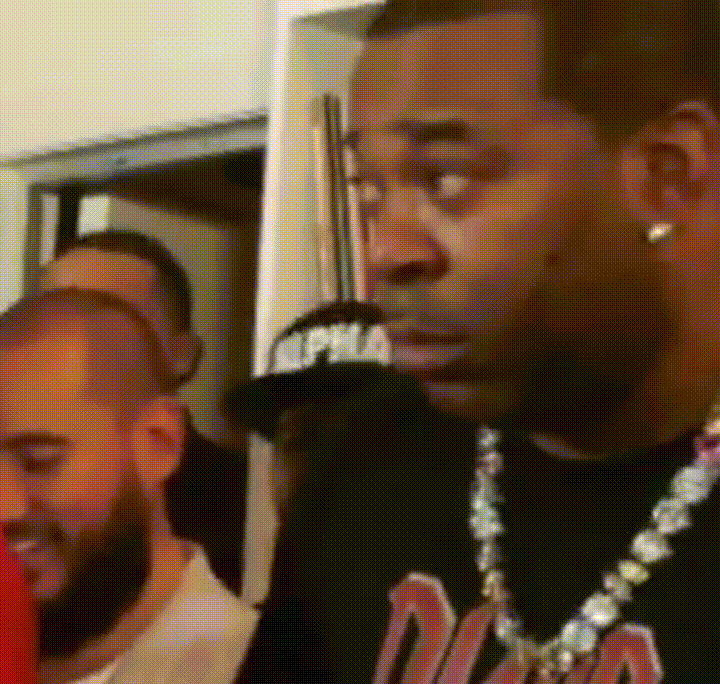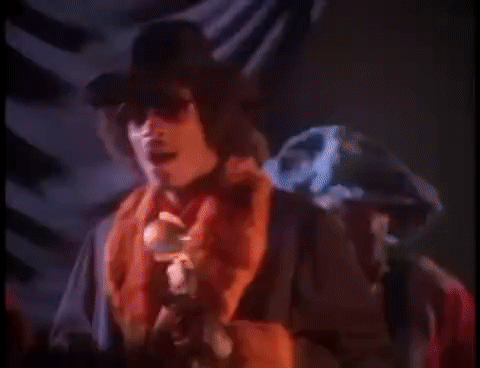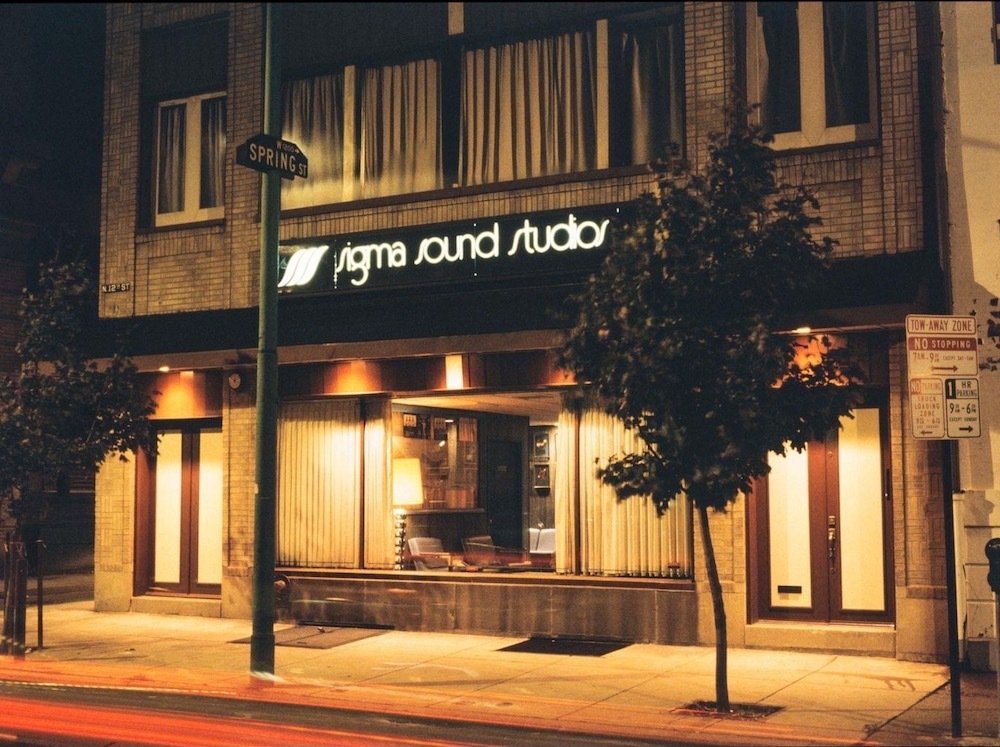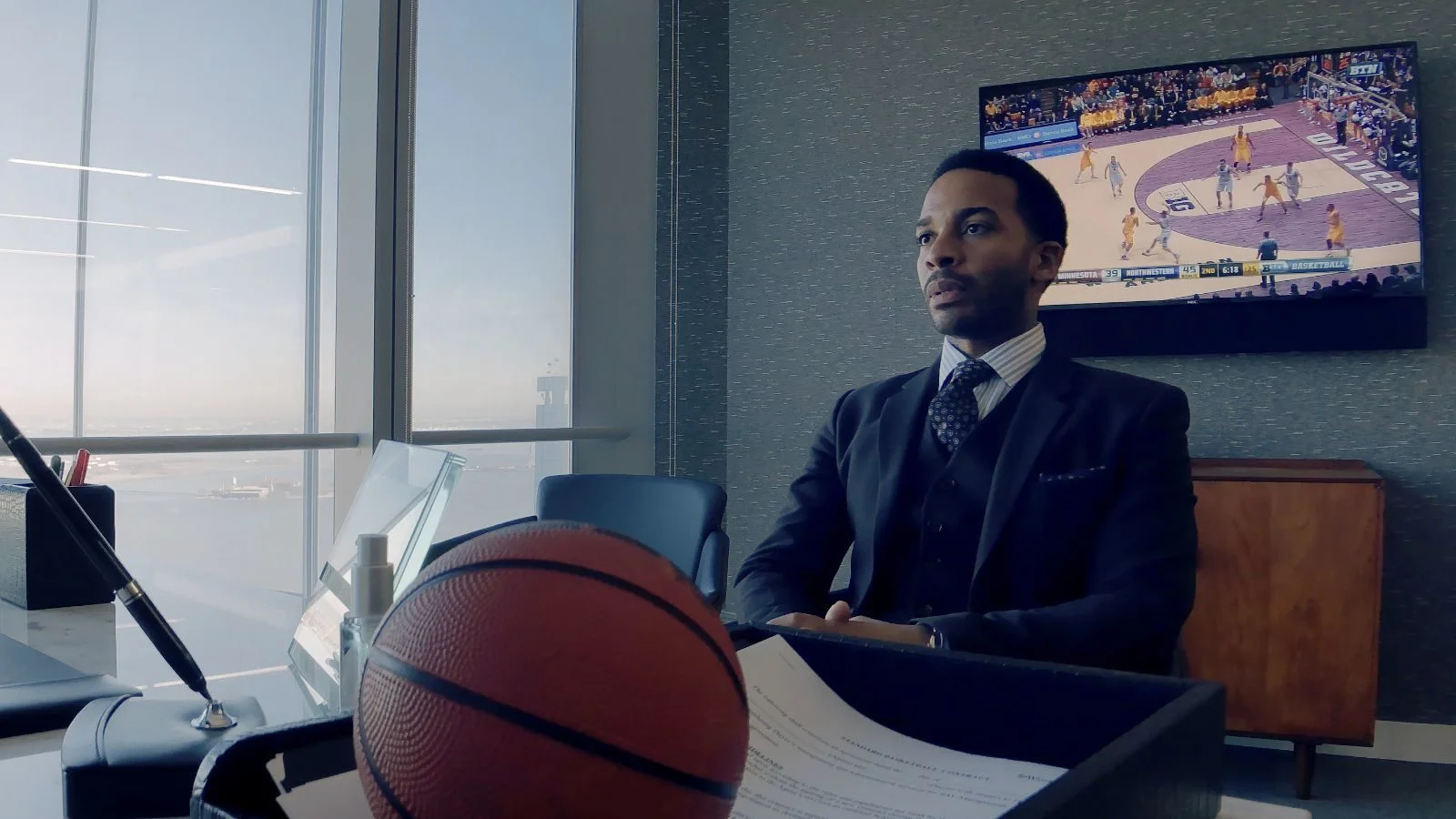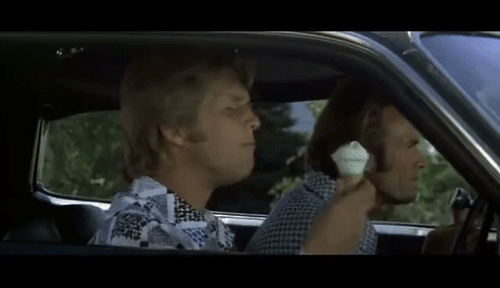Ego Trippin': Five Bandleaders That Mistakenly Believed They Were Bigger Than The Band
With great power comes great responsibility. This is especially true for anyone leading a mercurial group of personalities working together to create music.
There’s a reason bands last well below the national divorce rate of 50%. Without doing the data, it’s likely closer to, or below, the 20% U.S. success rate of restaurants, according to to the National Restaurant Association (our fav NRA). So let’s just say the likelihood for a group of musicians moving in the same direction for an extended period, exists somewhere between coin-flip and respectable tip.
Today’s The Five Spot features examples of a group or bandleader’s ego running amuck resulting in a great unit splitting up. In all five of these instances, the gift of hindsight provides us with evidence that perhaps they should have appreciated what they shared together more. All five cases included some levels of legitimate success, from across five different genres, over the past fifty years.
Cheers.
Without further ado, we present to yoūse “Ego Trippin’: Five Bandleaders That Mistakenly Believed They Were Bigger Than The Band”
David Byrne: Only Thing Bigger Than The Suit Was The Ego
Leadership: David Byrne, lead-singer/guitarist/songwriter of Talking Heads, one of the most acclaimed bands of its era, 1975 to 1991.
High Wudder Mark: Some diehards might argue their most critically acclaimed album, 1980’s Remain In Light, recorded at Sigma Sound Studios in Philly. In some ways, that’s true. But their actual apex as a top band, when accounting for all factors, is on the heels of Speaking In Tongues. That’s when they were still functioning highly as a cohesive unit, but had ascended to their commercial peak and were able to carry that momentum into a tour, with an attached concert album, plus a feature-film documenting the band’s bigger sound in action. That film, the Jonathan Demme-directed Stop Making Sense, went on to be arguably the greatest concert film of all-time, or at least on the short list.
The Tripping Point: Probably sometime right after the success of Stop Making Sense . The band never toured again. David Byrne used some of his well-earned clout for a budget to write/direct his first feature film, True Stories. An accompanying Talking Heads album, released in 1986, came with it. But the band’s workstyle had changed. Songs were now conceived, performed, and written by Byrne alone, recorded in demo form. The remaining three Heads were then tasked with composing music around these demos after the fact. By 1988’s Naked, clearly things weren’t the same. The band discovered Byrne had ended Talking Heads via an LA Times article. No official band statement on a breakup arrived until their 1991 best-of-anthology Sand In The Vaseline. Speaking of sand in the Vaseline, Drummer Chris Frantz still seemed chafed in ‘92, stating “As far as we're concerned, the band never really broke up. David just decided to leave.".
Living Well’s The Best Revenge: During an early eighties hiatus, while Byrne pursued a project with Brian Eno, husband-and-wife rhythm section Drummer Chris Frantz and Bassist Tina Weymouth formed Tom Tom Club. If that name doesn’t sound familiar to you, the single for their first album, “Genius Of Love” would. This song would become a staple in any New York City club scene worth being in during the dawn of Reagan: disco, funk, early hip-hop, punk rock, pop.
In addition to being a bigger hit than any song Talking Heads had made to date, “Genius Of Love” was reconfigured as a beat by Andre Harrell for a 1981 early rap classic by Dr. Jeckyll & Mr. Hyde. It later provided the template for a collaboration no one could have imagined until it happened in ‘95: Mariah Carey and Ol’ Dirty Bastard, re-appropriated by a man of many names (Puffy, Puff Daddy, P Diddy, Diddy, Love) who invented the phrase ‘we invented the remix’.
Tom Tom Club was a project whose first-wave-hip-hop/dub/electro-funk sound was originally thought to be “too commercial” according to David Byrne’s tastes. Some of the material might have even been rejected first by Byrne for Talking Heads depending on who you ask. But after it and follow-up “Wordy Rappinghood” started popping like the baddest b-boy in town…Byrne did an about face and hired legendary Parliament Funkadelic keyboard killer Bernie Worrell, “Weird R&B” Queen Nona Hendrix of LaBelle, and jazz-funketeer Wally Badarou the synth-man for Level 42 to fill out the reconvening Talking Heads sound. The results became their most straight-ahead R&B/Funk/Hip-Hop, while not coincidentally “commercial” project to date, Speaking In Tongues, which included the P-Funk homage “Burning Down The House” and personal-fav/hypothetical-wedding-song-someday “Naive Melody (This Must Be The Place)”. Remember, kids…it’s about what they do, not what they say.
Wudder Under The Bridge: Talking Heads never reunited as a foursome onstage after Stop Making Sense, aside from performing at their 2002 Rock & Roll Hall of Fame inauguration.
Jerry Harrison would be a high-end session-player and in-demand producer for a variety of mostly nineties-birthed bands: Fine Young Cannibals, Live, Crash Test Dummies, Big Head Todd and The Monsters, Kenny Wayne Shephard, Violent Femmes, and No Doubt.
Chris Franz and Tina Weymouth kept their rhythm section together, both personally and professionally, while producing for Happy Mondays and Ziggy Marley, occasional Tom Tom Club projects or tours, and just wrote a memoir together documenting their shared life making music, Remain In Love.
As for David Byrne, he’s done many things since ‘88: started his own world-music record label (Luaka Bop), collaborated again with Eno, recorded solo projects, toured with Arcade Fire and even made a collaboration album, plus live tour EP with Wudder Favorite Annie Clark aka St. Vincent.
Byrne is a weird dude. Which is cool. Such is life when it comes to making psycho-killing, house-burning art. By his own undiagnosed evaluation he’s described himself as “on the spectrum”. His nerdy mad-scientist persona provided a perfect band-fronting foil for Talking Heads, both in its early punk beginnings, later in their world-beat/prog-funk-rock ensembles, and recently on his drum-heavy-shed-tour-turned-Broadway-play and Spike Lee-directed concert film for American Utopia. I was blessed to see that tour in Camden (thanks, Ro!) in its first summer. Incredible show. But make no mistake, it was Talking Heads songs that formed the musical foundation for it all tho.
Hopefully one sweet day, with all four members of Talking Heads alive and healthy, without the level of irreconcilable differences or Shakespearean drama seemingly present in bands led by Roger Waters or Axl Rose, this band with the help of magnanimous leadership might get together to make something again, while setting aside any petty grievances or counterproductive demands that coincide with massive talent plus ego. But if you ask me whether to bet on that ever happening? I’d simply borrow Nancy Reagan’s famous catchphrase, from back when this band was at its peak, and Just Say No.
Black Francis Ends Pixies Via Fax, Kim Deal Goes Plat, Frank Fades To Black
Leadership: Charles Thompson aka The Pixies’ Black Francis from (1986 to 1993) or The Catholics’ Frank Black (1997 to 2002) and now Pixies again (without Kim)
High-Wudder Mark: Diehards will name any of the first three: Come On Pilgrim (EP), Surfer Rosa, Doolittle. The Pixies never achieved the commercial success of the massive bands who came later on during the ‘alt’-rock boon. The Pixies are to those acts what The Velvet Underground were said to be to various rockers decades earlier, another one for whom the phrase “not many bought their records, but everyone who did started a band” was made.
The Tripping Point: The Pixies were a decidedly Boston band. But after Doolittle, like many notable Massholes (Whitey Bulger, Dane Cook, Marky Mark), Frank relocated to Los Angeles. The next two albums got a lukewarm reception. Black then ended the band by sending bandmates a fax.
Living Well’s The Best Revenge: Former bassist, singer, occasional songwriter Kim Deal’s side-project, The Breeders, became her full-time gig, now with twin sister Kelley in tow. Their first post-Pixie album, Last Splash, led by the smash singles “Cannonball” along with “Divine Hammer”, went platinum. It remains the only Pixies-related project to do. By the end of 1993, they were touring with Nirvana, plus had the middle slot between Cypress Hill and headliner Nirvana on New Year’s Eve ‘Live & Loud’ MTV broadcast.
Wudder Under The Bridge: I’m gonna keep it real, the reason that the Pixies existed in the first place, but also never blew up is Frank Black, Black Francis, or “Charles” (government first name) as Kim Deal calls the man who rarely let her fly. He’s not actually intended for mass audience consumption. He himself has copped to that, tho he seems to think that reflects his complexity more than a lack of ability or palatability. .
Almost all of the Pixies ‘big’ songs feature key vocal contributions (plus iconic bass lines) from Kim Deal: “Monkey Gone To Heaven”, “Debaser”, “Here Comes Your Man”, “Wave Of Mutilation”, “Gigantic”, and “Where Is My Mind?” to name a few you should check out if you’re unfamiliar.
That is not an accident. Nor is their output dropping in quality once Deal was no longer around following Black’s 1990 move to L.A., where he undoubtedly did what most Bostonians due in L.A.: move there in disproportionately large rates while never ceasing to tell anyone around them about how great Boston is. Then go back there soon, please and thank you. Sorry, the former-Northeastern-University-student-turned-longtime-LA-resident-part-of-me musta gotten triggered there. Back to Black….that big ego on Chaz had to feel that hit as The Breeders, with an album of Kim Deal-penned songs, outsold every Pixies album, and every album he’s released himself since 1993.
And that’s realer than ‘Real Deal’ Holyfield.
So now you Red Sox-hat-rocking, Dunkin’ Donut-jocking, funny-talking-bros knows how I feel.
This was the scene on 12th and Wilshire in Santa Monica at 5 AM outside the first Dunkin’ Donuts to arrive on the Westside after Memorial Day in 2014. I had already seen people gathering and camping out there since early Friday while walking to an ATM heading into a three-day holiday weekend. There was already a Coffee Bean, Starbucks, diner, grocery store, and Krispy Kreme within a stones throw of this corner. Trust me, only Massholes could have committed to a bit this stupid. I did an unofficial census.
The Pixies outsized influence on Nirvana is a rock critic cliché, as if The Pixies were the first to do soft-to-loud dynamics on record.
But Kurt Cobain, who actually could sing/write/play-lead-and-rhythm-guitar, plus demonstrate a rare knack for being able to routinely scream in key, said in 1993: “I wish Kim was allowed to write more songs for the Pixies, because ‘Gigantic’ is the best Pixies song and Kim wrote it.”
Last Splash.
Last Laugh.
"Pay Attention, Chuck! Open Your Eyes, You’re Gonna Lose The Race!”-Peppermint Patty
Leadership: Charile Brown, former rapper of Leaders of the New School, 1990 to 1994.
High-Wudder Mark: “Just Another Case of the PTA”, the first single, which caught strong Yo! MTV Raps buzz.
The Tripping Point: There were many…Charlie Brown had already broken up the band before taking their demo in to Dante Ross at Elektra on his own. Things got temporarily better in fits, starts, or occasional backstage flying fists, from right then until the group’s ignominious end…which took place approximately three years later while on camera with Fab 5 Freddy during a taping for the weekend version of Yo! MTV Raps.
Living Well Is The Best Revenge: Busta Rhymes went onto a Legendary Rap Career that continues…
Wudder Under The Bridge: Leaders of the New School was a four-man rap group with barbershop-quartet or doo-wop style vocal synergy onstage. Formed in Uniondale Long Island as teens, they spent some time on the talent-show circuit, until winning a competition to open up for the greatest rap group of the era, fellow Long Islanders Public Enemy, at Nassau Coliseum. Armed with Chuck D’s co-sign, Bomb Squad production, A Tribe Called Quest affiliation, and a record deal at Elektra with hip-hop A&R legend Dante Ross (Beastie Boys, De La Soul, Queen Latifah, 3rd Bass, Brand Nubian, ODB, Everlast) they were off to the races.
Things were looking up in ‘92 as “Just Another Case of The PTA” was getting play on Yo! every day. Until ego, youth, and pettinesses got in the way.
In their early days, Charlie Brown was the group’s de facto leader. But by the time of their acclaimed debut, A Future Without A Past.., there was clear signs that 18-year-old Busta Rhymes was its breakout star. This fairly obvious fact seemed lost on Charlie Brown, a great rapper imbued with a double-dose of self-confidence, yet missing any modicum of self-awareness. That lack of balance soon metastasized into self-destruction, for him and the group.
Busta’s scene-stealing performance on A Tribe Called Quest’s “Scenario”, a song Brown and fellow Leader Dinco D were also on, was a seismic show stopper. It also began a tradition of Busta pitching the closing verse on posse cuts. Look at Arsenio Hall’s face while witnessing a teenage Busta Rhymes for the first time live. Then notice how Charlie Brown is working hard running thru the audience on his verse, while stepping in front to keep doing that proto-Antoine-Walker-shimmy-with-leg-lift-in-Cargo-shorts. By contrast Busta’s energy is always unbridled, but never desperate.
By Leaders of the New School’s second album, T.I.M.E., the group was running out of it. No one involved with its painstaking making, or promoting at the label, believed in the project. Busta was gaining further traction on a few features outside the group, having fired up the chorus for A Tribe Called Quest’s “Oh My God”, plus ran anchor on “Flava In Ya Ear (Remix)” with Biggie, Craig Mack, and LL Cool J. Elektra wanted Busta to do a solo album. But if things were good, Busta would have been willing and able to maintain his place in LONS as well. Or LONS could have been granted a chance, like Brand Nubian after the exodus of their top dog Grand Puba, following his show-stealing appearance on “What’s The 411” with Mary J Blige, to soldier on without its departing star to see whether the remaining group could succeed like Brand Nubian did. Alas, it was not meant to be. Following their breakup before MTV aired the clip. Ross had no interest in working further with Brown. The rest is good grief history, save for a reunion on the Busta Rhymes & Friends show at Brooklyn Hip-Hop Festival in 2012.
“Bitch, You Without Me Is Like Harold Melvin Without The Blue Notes, You’ll Never Go Platinum!”-Snoop Doggy Dogg
Leadership: Harold Melvin, vocalist and ‘leader’ of Harold Melvin & The Blue-Notes, from 1972 until his death in 1997.
High-Wudder Mark: 1975’s Wake Up Everybody, the last with Teddy Pendergrass, containing the Top 10 Billboard Pop/#1 Soul hit of the same name.
The Tripping Point: There seemed to be tripping, or powerful paperwork pimping, since the beginning. How else would Harold Melvin remain the only individual name on the marquee, for reasons few can see. Quite justifiably after losing Teddy, their fortunes dropped off precipitously.
Wudder Under The Bridge: Harold Melvin & The Blue Notes were a platinum-selling recording act. A flagship Philadelphia International Records group during its apex. The burgeoning Philly Soul movement led to legendary non-local acts like The Jacksons, The Spinners, Stevie Wonder and David Bowie (with a young Luther Vandross in tow) flocking into Philly to soak up some of the magic at 212 North 12th Street, now historically landmarked, in Sigma Sound Studios.
“If These Walls Could Talk”(c)Kendrick/Thundercat/Bilal/Anna Wise
Harold Melvin did not assemble the earliest incarnation of the Blue Notes, as a doo-wop group called The Charlemagne’s. He did not write any of their songs,. That task was mostly done by Hall of Fame Songwriting Team Kenneth Gamble & Leon Huff, who produced as well. Melvin did not play an instrument for the Blue Notes onstage, or on record. He was never their lead singer in any of its many incarnations. He did not take any of the group’s trademark the high-tenor/falsetto parts. For most of their biggest records, the lead singer was the late great Teddy Pendergrass. Their list of soul classics includes: “If You Don’t Know Me By Now” (covered to massive success by Simply Red), “The Love I Lost”, “Wake Up Everybody” (rebooted on John Legend & The Roots’ Wake Up), “Bad Luck”, and “I Miss You”, sampled to great effect by Kanye West on Jay-Z’s “This Can’t Be Life” with Scarface & Beanie Sigel, and Big Boi on “Shine Blockas” with Gucci Mane.
Melvin, to this day, does not have a Wikipedia page. Is there another leader of a platinum act bearing his name about which you could say that? Don’t worry, I’ll wait. Some still mistake Harold Melvin as lead singer due to the name. Pendergrass went on to become bigger as a solo act after leaving in 1976, before a near-fatal car accident in 1982, due to mysteriously malfunctioning brakes, paralyzed for life. One of my earliest live TV music memories as a kid was the emotional magnitude of Pendergrass making his first public appearance post-paralysis in 1985, onstage in Philadelphia’s JFK Stadium at Live-Aid, broadcast live on MTV.
Harold Melvin continued to tour with his name atop the marquee for two decades after Teddy, while rotating an ever-shifting assemblage of lead-singers/tenors/falsettos/producers/musicians for two decades after Pendergrass’ exit, up until Melvin passed from stroke complications in 1997.
Robbie Robertson: Post-Band Solo Career Quieter Than His Unplugged Mic In The Last Waltz
Leadership: Robbie Robertson, Lead Guitarist/Principal Songwriter from 1967 to 1977.
Leadership Backstory: Robertson started as a teenage guitar prodigy when this band began in 1962 as The Hawks, backing up rockabilly legend Ronnie Hawkins as a live act in Toronto. A few years later they got the call to join Bob Dylan on his controversial first live shows and tour since “going electric” in ‘65/’66. They’d later hole up in Woodstock NY, where Dylan moved as he recovered from a motorcycle accident, to record in the basement of a house affectionately known as “Big Pink”. This became the origin story of The Band, officially signed to a major label and began working on recording as their own unit, with Robertson ostensibly penning most of their original music, officially beginning on record and onstage as The Band in 1968.
High Wudder Mark: It would have to be Fall 1969, immediately following release of the eponymous “Brown Album”, which came hot on the heels of The Band’s debut Music From Big Pink. During that same window, extensive album length bootlegs of prior or contemporaneous recordings from the basement with once-and-future-front-man Bob Dylan were being widely circulated. The spot had been blown on the Woodstock ‘retreat’, by Summer 1969 the presence of Bob Dylan and The Band had been some of the inspiration for a proposed upcoming massive music festival on a farm in nearby Bethel. Dylan, a legitimate superstar plagued by ‘voice of a generation’ speculation had already fled New York City for Woodstock’s country privacy. He wanted no parts of what was coming, moving his operation down to Nashville while wishing his supporting band good luck on the future they were about to chase. The Band stayed to finish recording. A month before their second album of originals was set to drop, they played a choice final Sunday night set at the Bethel festival now formerly known as Woodstock, just a few hours before Jimi Hendrix’s legendary post-dawn set closed up shop.
Let me reiterate, in a 15-month period from the beginning of July ’68 to September ’69, a previously-known-as-a-backing-band would record two of the greatest classic-rock albums of all-time, had cut 6 to 8 full-length albums with Dylan that would be commercially released as a classic double-album and accompanying arena tour with Dylan in 1974, while just before the summer ended in a cultural apex they’d unwittingly helped create, they performed a set on Sunday at Woodstock that required multiple encores.
Do You Want More?!!!??!
The Tripping Point: Ironically enough, it can basically be traced back to another of one of the greatest concert movies of all-time, about a decade before Talking Heads and Jonathan Demme would make theirs. The Band, specifically Robbie, had found a man in the early process of becoming one of the greatest American auteurs of all-time, Director Martin Scorsese. Scorsese, like Demme a passionate music fan, was already on an unbelievable heater since first breaking into film in the early-to-mid-seventies (in order): Mean Streets, Alice Doesn’t Live Here Anymore, Taxi Driver and The Last Waltz which were both being made at the same time. The Last Waltz’ concept, hatched primarily by Robertson and Scorsese, with debatable levels of acquiescence from the other musicians, was by cinematic standards a great concept. It’s a concert film with footage of the group in their old Woodstock haunt, with interviews reflecting on their shared career, surrounded with footage of a star-studded concert at San Francisco’s Winterland Theater, in front of a packed house full of friends, on Thanksgiving Weekend 1976. It’s a conceit too good to fail. Jay-Z’s retirement-fantasy/concert-film/documentary Fade To Black is also a masterpiece for similar reasons.
Problems? If you look close enough, you can see them. And I’ve seen Last Waltz approximately fifty times. The wild look in Richard Manuel’s eye. The way Robertson and Scorsese have clearly become coke-skimo buddies in love with the sound of their own voices above anything. The impracticality of calling it a wrap for the sake of a scripted finish as touring musicians, when Robertson is the only one with his name on the publishing, despite others claims that the arrangements were usually collaborative.
Things rarely end picture perfect with that outstretched hand hanging down for a game winner in Utah after just getting away with a push-off on Byron Russell. Things almost always end badly, otherwise they wouldn’t end. Ask MJ while he’s missing dunks in the All-Star game on breakaways in a Wizards uniform then getting jerked out of the ownership stake they’d already given him.
In The Band’s case, things ended because one person said so, not fully considering why the rest might need to someday continue. Mailbox money wasn’t gonna pay their mortgages or support the rock star lifestyle they’d grown accustomed. By the turn of the eighties, things got tough and at times grew truly ugly. And unlike the coke rock in Neil Young’s nose just before he launches into “Helpless” onstage at the Winterland show, you can’t clean real life off-camera up in post.
You also also can’t hear Robbie Robertson singing in The Last Waltz, despite Robertson’s sweaty-soaked efforts to show him doing so throughout Scorsese’s classic film. That’s because as was The Band’s typical custom for live shows, with the relative non-singer Robertson surrounded by several gifted vocalists who could rotate singing lead or background, his mic was not actually on. Helm famously made a point of this along with lodging other complaints about Robertson in his autobiography This Wheel’s On Fire.
These Walls Have Been Known To Talk
Living Well’s The Best Revenge: Tragically living well was not in the cards for Richard Manual, a sensitive soul haunted by demons and dependency who died by suicide ten years after The Last Waltz. Yet Helm, Danko, and Hudson would soldier on to make their best post-‘breakup’ work in 1993’s Jericho. The jewel of it’s a cover of Bruce Springsteen’s skeletal 1982 Nebraska track “Atlantic City”. After reuniting the E Street Band in the mid-to-late 90’s, Springsteen would pay The Band’s version the ultimate respect by performing it in their arrangement. For a musician, that’s the ultimate compliment. Dylan went on to do the same after hearing Jimi Hendrix take his original acoustic “All Along The Watchtower” out into an entirely undiscovered new astral plane. The Band’s cover is also superior to anything that we ever got from Robertson after his departure. And getting the chance to open the festivities the following year at Woodstock, (note: the ‘94 muddy one not the ‘99 nu-metal rapey one), twenty-five years after playing that set shortly before Hendrix, felt a little like a movie ending anyway.
Wudder Under The Bridge: Robertson, the youngest, and Hudson, the oldest, are the only two that remain, so thanks, and let’s hope so, is all there’s left to say.

